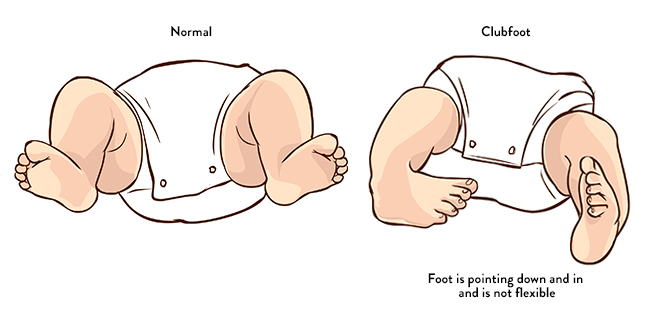Contact us
If you would like to learn more or if you are ready to make an appointment, please call or contact our team.
Clubfoot is a condition of the foot, ankle and knee in which malformation of the muscles, bones, tendons and blood vessels cause the foot to point downwards and turn inwards. It is often present at birth. In most cases, the condition is diagnosed as idiopathic clubfoot, or clubfoot that is not associated with any other related medical conditions. The condition can affect one or both feet. Approximately 1 in 1,000 newborns have the condition, and it affects boys about twice as often as girls.
Though we don’t know exactly what causes clubfoot, we do know that it is a combination of genetic and environmental factors. There is no definitive evidence that clubfoot is caused by any activities or deficiencies during pregnancy, so the environmental factors are largely unknown and thus outside the control of parents. There is a genetic component, but it is passed down in a much more complex way than more commonly known genetic traits like blood type or sickle cell anemia. Through this array of genetics and other risk factors, having one child with clubfoot does increase the likelihood that another child will have clubfoot from roughly 1 in 1,000 to 3 in 100.

In most cases, idiopathic clubfoot responds well to the Ponseti method, a non-surgical, cast- and brace-based treatment with minimal complications and a high rate of success. There are other less common types of clubfoot. Neurogenic clubfoot develops alongside a neurological condition like spina bifida. Syndromic clubfoot is secondary to a condition that affects our muscles or skeleton, such as arthrogryposis, constriction band syndrome, tibial hemimelia and diastrophic dwarfism. These types of clubfoot can be more difficult to treat and may involve a need for surgery. In many cases, however, even non-idiopathic clubfoot will also respond to the Ponseti method.
Connect with us:
Download our App: